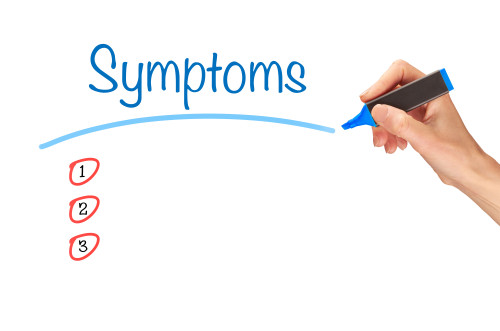People who have Histamine Intolerance can experience a diverse range of different symptoms. A diagnosis requires at least 2 typical symptoms of HIT.
For more information about what to discuss with your doctor & what to consider before you start a low-histamine diet have a look at the first steps page.
Digestive tract
- Diarrhoea
- Diarrhoea alternating with normal motions (Irritable Bowel Syndrome – IBS)
- Chronic constipation
- Flatulence and feeling of fullness
- Stomach cramps
- Stomach ache
- Nausea
- Vomiting
Symptoms affecting head and face
- Headaches, similar to migraine
- Runny nose and weepy eyes, although there is no clinical sign of allergies
- Fits of dizziness
- Extreme tiredness, feeling knocked out
- Quinke Oedema (swellings mostly appearing around eyes and lips, sometimes in the area of the throat)
- Flushing of face and/or chest
Skin problems
- Skin rashes, itchiness
- Eczema,
- Urticaria
- Acne (pimples)
Chest area
- Asthma
- Cardiac arrhythmia, such as a fast beating or irregular heart beat
Women
- Dysmenorrhoea (severe period pains)
- HIT symptoms go away during pregnancy and return after birth of child
Other symptoms
- Chills and shivers
- Low blood pressure
- Circulatory collapse
- Sudden psychological changes (e.g. aggressiveness, inattentiveness, lack of concentration)
- Sleep disorder
- You should check with the help of your GP (doctor or physician) for other intolerances of some specific foods or food groups, and allergies.
- Your GP should automatically also check for any other underlying health issues.
- Do not change any medication you have been given unless you have talked to your GP, and try to find alternatives with them if necessary.
- Going on a diet and assuming you have HIT is not a useful way of tackling the problem.

